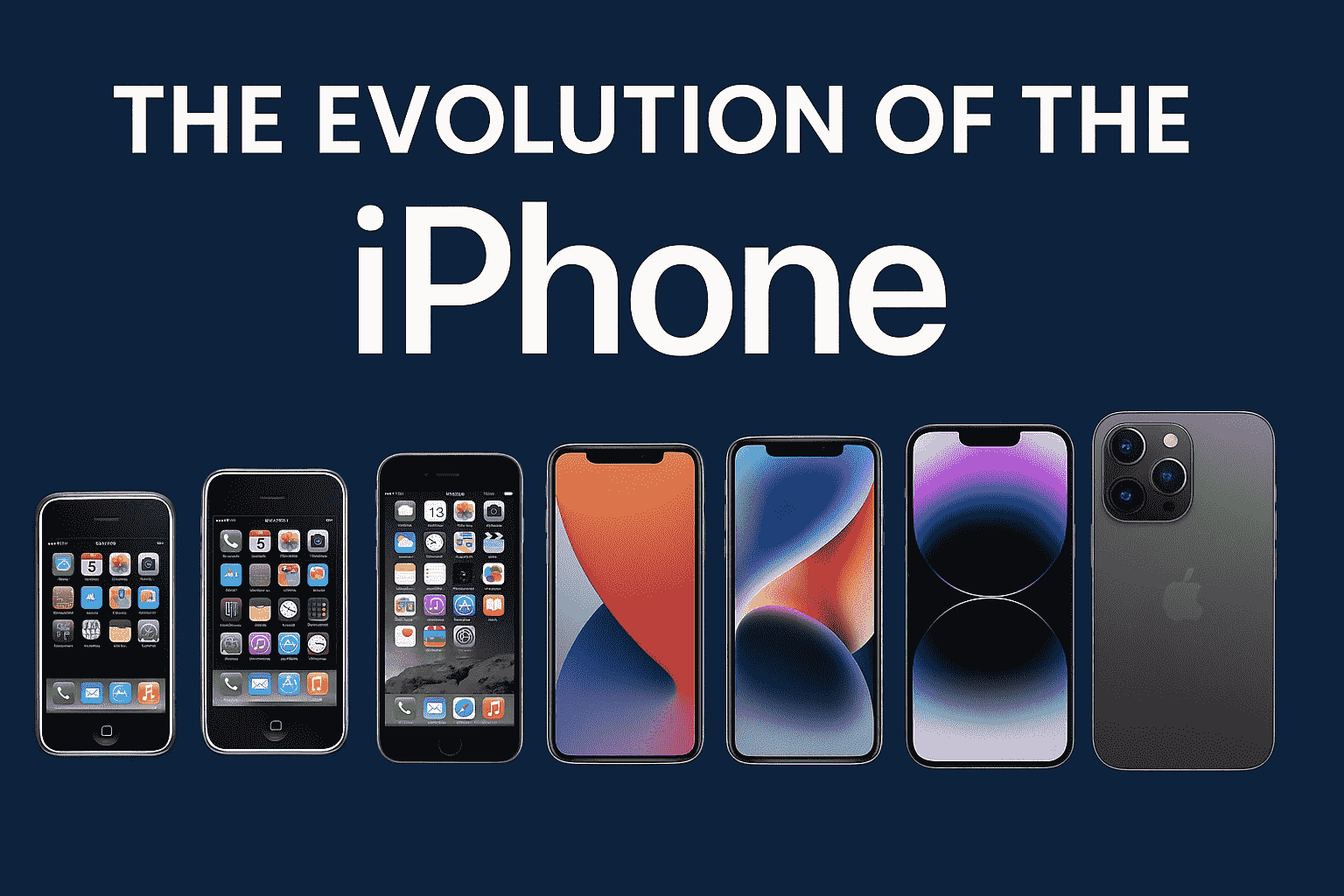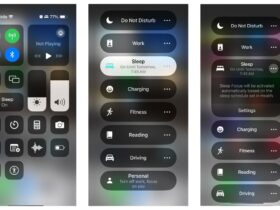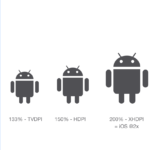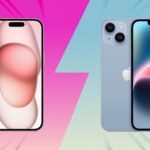When Apple first introduced the iPhone in 2007, few could have predicted just how dramatically it would alter the trajectory of mobile technology. The evolution iPhone story is not just about hardware specs or annual design refreshes it’s a timeline of innovation that has continuously set industry benchmarks, reshaped user expectations, and redefined what smartphones can do. From humble beginnings with a single device to the complex, powerful ecosystems of today’s iPhone models, Apple’s journey is a compelling example of iterative brilliance in consumer electronics.
Chapter 1: The Revolutionary Beginning (iPhone 2G)
Steve Jobs unveiled the original iPhone—later known as the iPhone 2G—on January 9, 2007. It combined three devices into one: a widescreen iPod with touch controls, a revolutionary mobile phone, and a breakthrough Internet communicator. With its 3.5-inch screen, 2MP camera, and capacitive touchscreen (a rarity at the time), the original iPhone instantly stood apart from anything else on the market.
Critics initially scoffed at the lack of features like 3G support or an App Store, but they overlooked what mattered most: Apple had fundamentally reimagined how people interacted with technology.
Chapter 2: The Foundation Strengthens (iPhone 3G and 3GS)
The 2008 iPhone 3G introduced faster mobile internet and, more importantly, the App Store. This singular move allowed third-party developers to create applications, rapidly expanding the iPhone’s functionality and driving user engagement.
With the iPhone 3GS in 2009, Apple focused on speed and performance, improving processing power and camera quality. Voice Control (a precursor to Siri) was also introduced. These models laid the groundwork for the iPhone as both a consumer and business tool.
Chapter 3: The Retina Era (iPhone 4 and 4S)
In 2010, the iPhone 4 arrived with a complete redesign featuring a stainless steel frame and glass front/back, marking Apple’s first use of the high-resolution Retina display. The device also included a front-facing camera, setting the stage for FaceTime and the rise of selfies.
The iPhone 4S, released in 2011, brought Siri—Apple’s virtual assistant—to the public. Though somewhat gimmicky at launch, Siri laid the groundwork for voice-driven interaction with devices.
This era also marked Apple’s growing focus on vertical integration. By designing both the hardware and software, Apple could ensure tightly optimized performance—a key differentiator from Android competitors.
Chapter 4: Going Bigger and Bolder (iPhone 5, 5C, 5S)
The evolution iPhone continued in 2012 with the iPhone 5. This was Apple’s first device to feature a larger 4-inch screen and a thinner aluminum body. The lightning port debuted here, replacing the aging 30-pin connector. The iPhone 5 balanced portability with an improved display, becoming a fan favorite for its sleek design.
In 2013, Apple introduced two variants: the iPhone 5C (a colorful, plastic-bodied budget option) and the 5S, which brought Touch ID fingerprint authentication and the first 64-bit smartphone processor (A7 chip). This was a bold leap, giving the iPhone a performance advantage years ahead of its rivals.
Chapter 5: The Phablet Revolution (iPhone 6, 6 Plus, 6S Series)
With the iPhone 6 and 6 Plus in 2014, Apple finally embraced the phablet trend. The iPhone 6 featured a 4.7-inch display, while the 6 Plus offered a 5.5-inch screen. These changes addressed growing consumer demand for larger screens and positioned Apple to compete with big-screen Android devices.
The iPhone 6S and 6S Plus followed in 2015 with 3D Touch, an innovative pressure-sensitive input system. This generation also introduced Live Photos and a significantly improved 12MP rear camera, further enhancing Apple’s position as a mobile photography leader.
Chapter 6: Refinement and Stability (iPhone 7, 8 Series)
The 2016 iPhone 7 series removed the headphone jack—a controversial but ultimately industry-shaping decision. Apple also introduced IP67 water resistance and stereo speakers. The iPhone 7 Plus featured a dual-lens camera system, enabling Portrait Mode for the first time.
With the iPhone 8 and 8 Plus in 2017, Apple refined its glass-back design to enable wireless charging and upgraded the display with True Tone technology. However, this era was overshadowed by something far more dramatic: the iPhone X.
Chapter 7: The Future Unveiled (iPhone X and Face ID)
Celebrating the 10th anniversary of the iPhone, the iPhone X was a complete departure from previous designs. It eliminated the Home button, introduced an OLED Super Retina display, and debuted Face ID facial recognition. The gesture-based interface would go on to define all future iPhones.
This was more than a redesign; it was a paradigm shift. Apple’s neural engine-powered Face ID system was not only secure but paved the way for new biometric interactions.
Chapter 8: Scaling Innovation (iPhone XS, XR, 11 Series)
The iPhone XS and XS Max continued Apple’s OLED trend, while the more affordable iPhone XR brought flagship features to a broader audience. In 2019, the iPhone 11 lineup elevated mobile photography with the introduction of Night Mode and an ultra-wide lens.
The A13 Bionic chip in the iPhone 11 series showcased Apple’s silicon dominance, offering unprecedented performance and power efficiency. At this point, Apple had positioned itself as the undisputed leader in mobile SoC design.
Chapter 9: 5G and Pro Power (iPhone 12, 13 Series)
The evolution iPhone narrative took another leap with the iPhone 12 in 2020. All models now supported 5G and featured flat-edge designs reminiscent of the iPhone 4. Ceramic Shield enhanced durability, and MagSafe reimagined wireless charging with magnetically attached accessories.
The iPhone 13 series in 2021 brought ProMotion 120Hz displays to the Pro models and significantly improved battery life. Camera hardware also saw upgrades, particularly with cinematic video modes and sensor-shift stabilization.
Chapter 10: The Desktop-Class Smartphone (iPhone 14 and 15 Series)
With the iPhone 14 Pro models, Apple eliminated the notch in favor of the Dynamic Island—a clever integration of hardware and software to display real-time alerts. The 48MP main sensor marked a turning point in iPhone photography, enabling more creative flexibility.
The iPhone 15 Pro introduced the A17 Pro chip built on a 3nm process, delivering desktop-level graphics and performance. USB-C finally replaced Lightning, aligning the iPhone with global charging standards. These updates brought the iPhone closer than ever to a true pocket computer.
What’s Next in the Evolution iPhone Line?
As we look forward to the next iterations, rumors point to further AI integration, under-display Face ID, and possibly foldable designs. Apple’s focus remains clear: refine, enhance, and redefine what a smartphone can achieve without rushing gimmicks to market.
Expect the iPhone to become even more integrated into Apple’s expanding ecosystem—from Vision Pro to Apple Watch—forming a seamless web of interconnected devices that cater to both casual users and professionals alike.
Key Technological Milestones in the Evolution iPhone Journey
Let’s summarize the most impactful innovations Apple introduced across its iPhone lineup:
| Feature | First Introduced | Notes |
|---|---|---|
| Capacitive Touchscreen | iPhone 2G | Changed mobile UX forever |
| App Store | iPhone 3G | Birth of the app economy |
| Retina Display | iPhone 4 | Raised standards for screen clarity |
| Touch ID | iPhone 5S | Seamless security integration |
| Face ID | iPhone X | Facial recognition with neural networks |
| A-Series Chips | Ongoing | Industry-leading custom silicon |
| ProMotion | iPhone 13 Pro | Smooth 120Hz refresh rate |
| USB-C Port | iPhone 15 | End of Lightning era |
| Dynamic Island | iPhone 14 Pro | Innovative use of display cutout |
Final Thoughts: Why the Evolution iPhone Story Matters
The evolution iPhone isn’t just a timeline of devices; it’s a mirror to broader trends in technology, design, and human-computer interaction. Apple’s iterative approach—prioritizing stability, ecosystem coherence, and thoughtful innovation—has enabled the iPhone to remain not only relevant but dominant for nearly two decades.
Whether you’re a developer, a power user, or just someone who appreciates premium tech, understanding this journey offers valuable insight into how innovation unfolds over time—not in disruptive leaps, but through deliberate evolution.

















Leave a Review